Playing the Blues: the Dominant Blues Chord Progression
If you have ever been to a jam session or open stage, you may have seen some people meeting there for the first time, and yet be able to play together a Blues song. How do they know what to play? Well, they all know “how to jam the Blues”, i.e. they know the Blues chord progression and what scales to use to solo on that chord progression. I am going to show you all this, so you too can go to an open stage and jam the Blues with other musicians!
The Chord Progression
The chord progression of Blues is (one symbol per bar): I, I, I, I7, IV, IV7, I, I7, V7, IV7, I, I7. Written in this way it’s not really easy to memorize. It becomes easier to memorize if we write it in three rows of four chords each, like this:
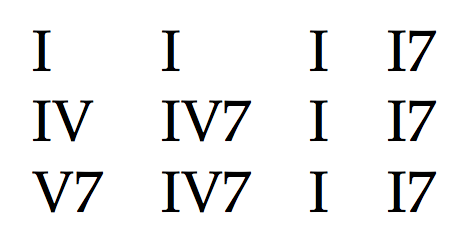
It pays to notice that all the chords here are dominant chords (i.e. seventh chords). It is an important thing to remember because in a single key we have only one dominant chord, while in the Blues progression all the three chords are dominant. This is what makes the Blues sound different from any other type of music.
In the following we will do everything in the key of A, but the same patterns and licks will apply in all keys. In the key of A (where the I chord is A, the IV chord is D and the V chord is E) the chord progression become:
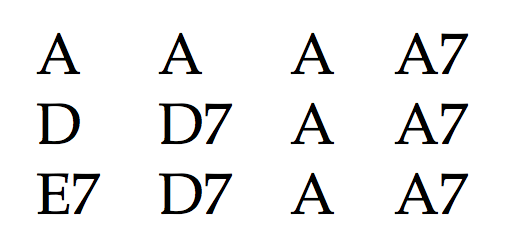
A common way to play this chord progression is what we call a Shuffle Blues. Here it is in its simpler form (You can hear an audio file of this tab by clicking HERE):




The Blues Scale and the Target Notes
Of course, if you want to jam the Blues you need to be able to play a solo on the Blues chord progression.
The most used scale to solo over the Blues progression is a minor pentatonic scale with an added b5, also called “the Blues scale”. Here is a diagram of the scale with the b5 marked in red.
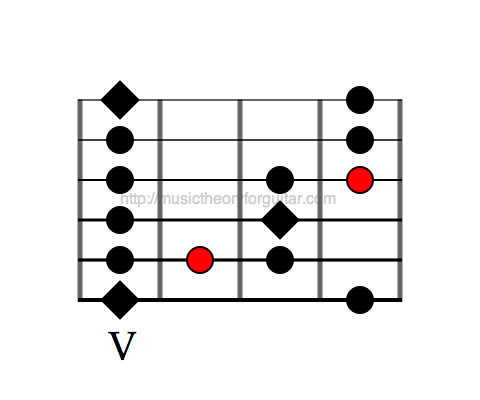
The b5 note is a great way to add tension and “grease” to a solo. But for very particular cases, you should not end a phrase on the b5 note: you should instead “resolve” the dissonance created by playing the b5 note by playing another note just afterwards. See the examples at the end of this page.
The key to make the Blues scale sound good is to learn the “target notes” for each chord. The target notes are the notes contained in the chord you are playing. These are the notes that sound better on the chord, and the ones that you should finish your phrases on when playing. The other notes are not bad or forbidden by any means, only they sound less “in” the chord if you hold them for too long.
On A7 (the I7 chord) the target notes are A, C# (not in the scale), E and G. They are shown in green here:
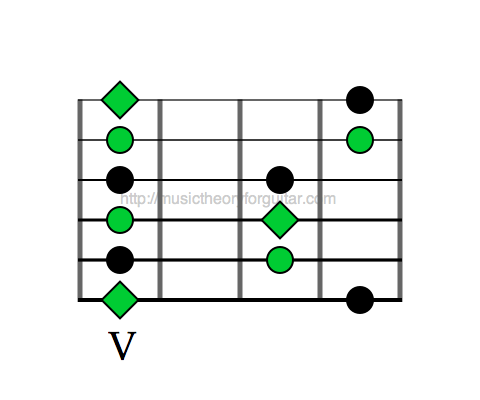
On D7 (the IV7) the target notes are D, F# (not in the scale), A, and C, all shown in green here:
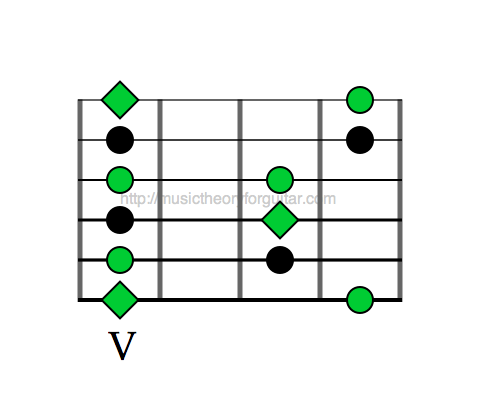
Finally, in E7 (the V7 chord), the target notes are E, G# (not in the scale), B (not in the scale), and D.
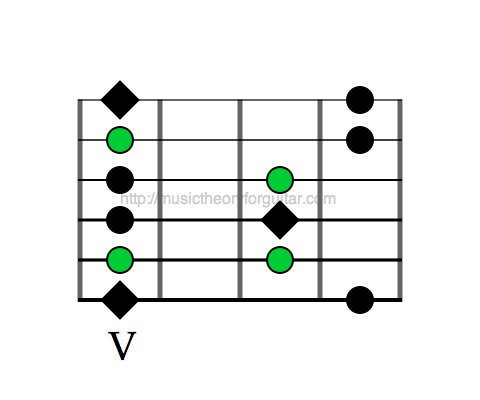
As you can see, some notes of the chord are not in the scale. Right now we choose to ignore these notes, we will talk more about them in a future lesson.
The Major Pentatonic
Finally, if you are already familiar with everything I’ve said up to now, you may want to experiment by mixing the major pentatonic with the minor pentatonic. Here is a diagram of the major pentatonic:
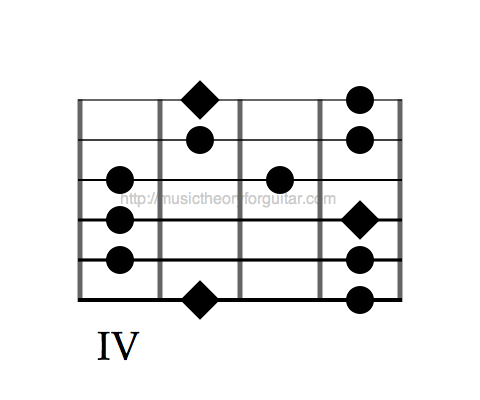
And here are some licks you can play by inserting some notes of the major pentatonic in between the notes of the minor pentatonic. I’ve marked the notes of the major pentatonic with “M” on the score. Note also the use of the b5 in a couple of them. You can hear an audio file of this tab by clicking HERE.


So, now you know the basics of playing the Blues. But, of course, there is much more that you can do. If you want to become a great Blues player, you need to start by learning all thescales for Blues guitarand how to use them. Click on the button below to get started:
